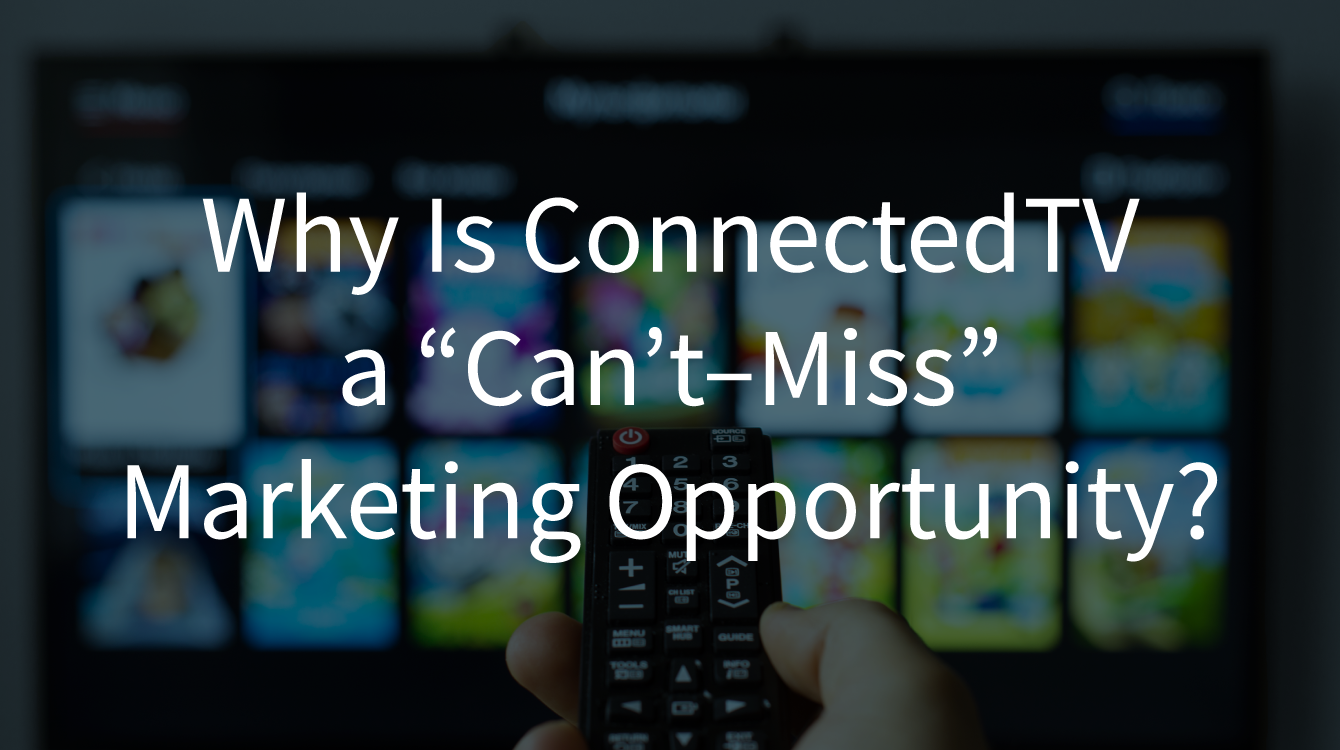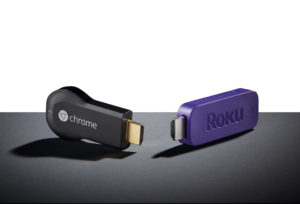
Articles | May 4, 2020 | 3 min read
Why Is ConnectedTV a “Can’t- Miss” Marketing Opportunity?
Here are some numbers you need to know…

Got all that?
We hope you do, because they point to a reality you can’t afford to ignore:
Outside of live news and live sports, linear TV is losing viewership in the tens of millions—it’s a legacy form of entertainment that’s struggling to remain relevant—and as viewers continue to cut the cord, broadcast TV will cease to be effective at influencing large audiences of consumers.

What’s driving the transition?
Aside from shifting cultural preference for OTT content, it’s the opportunities Connected TV affords marketers.
Personalized targeting (advertising that targets specific households as opposed to large, general audiences) isn’t possible through linear TV, but it is possible with Connected TV. With CTV marketers can utilize high-value, people-based data signals to deliver scalable, personalized advertising.
Moreover, the programmatic nature of Connected TV makes it possible to match quality supply with demand in real time (as opposed to linear TV where supply is not sold at auction in real time, but is sold months in advance on a CPM basis).
Coupled with the fact that commercial loads are lighter on CTV versus linear TV, and it becomes easy to see why marketers are nearly 70% more effective at influencing customers and cultivating purchase intent through Connected TV.
Not so.
The CPM’s for Connected TV are far lower than they are with linear TV—that means if marketers start moving away from Linear and towards Connected, they’ll be able to harness the power of TV advertising without devoting the big “chunk” of budget that traditional broadcast advertising requires. Think of it as TV advertising for pennies on the dollar.

As the technologies supporting CTV continue to improve (innovations like 5G are going to turn the TV industry on its head) and cultural preferences for the consumption of content evolve (COVID-19 is gasoline poured on the proverbial fire that is the transition from analog to digital) marketers will find it increasingly difficult to extract ROI from Linear TV.
Curious to learn more about CTV? Check out the Why Connected TV Is a Must Have for Brands Today webinar recording featuring these key industry thought leaders:
Darren Olive | EVP, National Advertising Sales & Strategy | Sony Crackle Plus
Reed Barker | Head of Advertising | Philo
Tom Sly | VP Revenue, National Media | The E.W. Scripps Company
Steve DeMain | VP, Platform Partner Sales | Vizio
Mike Piner | SVP, Video and Data Driven Investments | MediaHub
Ken Krasnow | VP, Omni-Channel Marketing | Henkel
Lauren Fisher | VP, Business Intelligence | Advertiser Perceptions
- 57% of Americans utilize some form of streaming service.
- 80% of U.S. households should be reachable through OTT.
- 56% of consumers now have an internet-connected television.
- 28% of Americans watch TV exclusively through streaming services.
(Zeta’s own internal research shows 60% of US adults no longer have access to cable television, and 76% of American adults between the ages of 18 and 54 already watch video through a CTV device—e.g. Roku, Apple TV, Chromecast, etc.—every day.)

Got all that?
We hope you do, because they point to a reality you can’t afford to ignore:
Linear TV is on the way OUT and Connected TV is on the way IN.
Outside of live news and live sports, linear TV is losing viewership in the tens of millions—it’s a legacy form of entertainment that’s struggling to remain relevant—and as viewers continue to cut the cord, broadcast TV will cease to be effective at influencing large audiences of consumers.

What’s driving the transition?
Aside from shifting cultural preference for OTT content, it’s the opportunities Connected TV affords marketers.
Personalized targeting (advertising that targets specific households as opposed to large, general audiences) isn’t possible through linear TV, but it is possible with Connected TV. With CTV marketers can utilize high-value, people-based data signals to deliver scalable, personalized advertising.
Moreover, the programmatic nature of Connected TV makes it possible to match quality supply with demand in real time (as opposed to linear TV where supply is not sold at auction in real time, but is sold months in advance on a CPM basis).
Coupled with the fact that commercial loads are lighter on CTV versus linear TV, and it becomes easy to see why marketers are nearly 70% more effective at influencing customers and cultivating purchase intent through Connected TV.
Well if advertising through Connected TV is more effective than advertising through linear TV, it must be more expensive, right?
Not so.
The CPM’s for Connected TV are far lower than they are with linear TV—that means if marketers start moving away from Linear and towards Connected, they’ll be able to harness the power of TV advertising without devoting the big “chunk” of budget that traditional broadcast advertising requires. Think of it as TV advertising for pennies on the dollar.

The transition between Linear and Connected is only going to accelerate.
As the technologies supporting CTV continue to improve (innovations like 5G are going to turn the TV industry on its head) and cultural preferences for the consumption of content evolve (COVID-19 is gasoline poured on the proverbial fire that is the transition from analog to digital) marketers will find it increasingly difficult to extract ROI from Linear TV.
_________________________________________
Curious to learn more about CTV? Check out the Why Connected TV Is a Must Have for Brands Today webinar recording featuring these key industry thought leaders:
Darren Olive | EVP, National Advertising Sales & Strategy | Sony Crackle Plus
Reed Barker | Head of Advertising | Philo
Tom Sly | VP Revenue, National Media | The E.W. Scripps Company
Steve DeMain | VP, Platform Partner Sales | Vizio
Mike Piner | SVP, Video and Data Driven Investments | MediaHub
Ken Krasnow | VP, Omni-Channel Marketing | Henkel
Lauren Fisher | VP, Business Intelligence | Advertiser Perceptions


